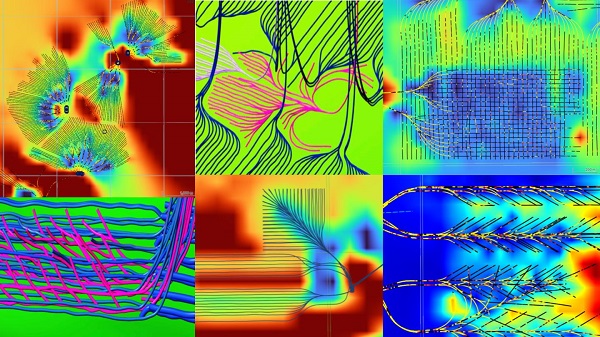Alberta
We Look Into The One Annual Event Covid-19 Cannot Cancel – Go Skateboarding Day

From an original symbol of menace and mischief subject to criminal bans in certain cities, to a mainstream sport with international competitions and heavy influence in the fashion and music industries, the evolution of skateboarding has been controversial. As a standalone sport, the skateboarding community has built a global network founded on its own unique culture, members and attitude.
“Skateboarding is a sport like no other … There are no teams and no rules. When someone skates well, we all win.” – Skateboard Here
Sunday, June 21, 2020 is the 16thannual Go Skateboarding Day (GSD), an international holiday encouraging skateboarders around the world to drop everything and go ride. Created in 2004 by the International Association of Skateboard Companies (IASC), GSD launched in southern California, the “unofficial skateboarding capital, and spread across the globe with the goal of becoming the “grind heard around the world”.

Since its inception in ‘04, Go Skateboarding Day has gained increasing traction in skate communities all across the world, but the focus always remains the same. The IASC encourages people everywhere to “put away your phone, your computer and video games, and go skateboarding”.
Although some members of the community don’t necessarily believe in the spirit of the holiday – skateboarding should be every day! – the sentiment surrounding the holiday largely reflects a positive, community-building event. In 2019, GSD rallies in major Canadian cities Vancouver and Toronto saw thousands of enthusiastic boarders take to the streets to celebrate, “The idea is that anyone who owns a board comes out and participates.”
Although GSD will look different around the world this year due to COVID-19, the show will certainly go on! With all other major summer events and community gatherings cancelled, Go Skateboarding Day 2020 represents a great opportunity to get out, connect with others and have fun while still maintaining distance.

According to Daniel Craig, Chair for the Calgary Association of Skateboarding Enthusiasts (CASE), the organization has not planned any official events due to COVID-19 concerns and regulations, but still encourages Calgary to get out and ride. “Skateboarding is social, it’s exercise, and it’s a great creative outlet for so many people,” says Craig, a skateboarder of 27 years, “I love Go Skateboarding Day. Get out, find a place to push around and do some tricks, enjoy it!”
For more stories, visit Todayville Calgary.
Alberta
Alberta bill would protect freedom of expression for doctors, nurses, other professionals

From LifeSiteNews
‘Peterson’s law,’ named for Canadian psychologist Jordan Peterson, was introduced by Alberta Premier Danielle Smith.
Alberta’s Conservative government introduced a new law that will set “clear expectations” for professional regulatory bodies to respect freedom of speech on social media and online for doctors, nurses, engineers, and other professionals.
The new law, named “Peterson’s law” after Canadian psychologist Jordan Peterson, who was canceled by his regulatory body, was introduced Thursday by Alberta Premier Danielle Smith.
“Professionals should never fear losing their license or career because of a social media post, an interview, or a personal opinion expressed on their own time,” Smith said in a press release sent to media and LifeSiteNews.
“Alberta’s government is restoring fairness and neutrality so regulators focus on competence and ethics, not policing beliefs. Every Albertan has the right to speak freely without ideological enforcement or intimidation, and this legislation makes that protection real.”
The law, known as Bill 13, the Regulated Professions Neutrality Act, will “set clear expectations for professional regulatory bodies to ensure professionals’ right to free expression is protected.”
According to the government, the new law will “Limit professional regulatory bodies from disciplining professionals for expressive off-duty conduct, except in specific circumstances such as threats of physical violence or a criminal conviction.”
It will also restrict mandatory training “unrelated to competence or ethics, such as diversity, equity, and inclusion training.”
Bill 13, once it becomes law, which is all but guaranteed as Smith’s United Conservative Party (UCP) holds a majority, will also “create principles of neutrality that prohibit professional regulatory bodies from assigning value, blame or different treatment to individuals based on personally held views or political beliefs.”
As reported by LifeSiteNews, Peterson has been embattled with the College of Psychologists of Ontario (CPO) after it mandated he undergo social media “training” to keep his license following posts he made on X, formerly Twitter, criticizing Trudeau and LGBT activists.
He recently noted how the CPO offered him a deal to “be bought,” in which the legal fees owed to them after losing his court challenge could be waived but only if he agreed to quit his job as a psychologist.
Early this year, LifeSiteNews reported that the CPO had selected Peterson’s “re-education coach” for having publicly opposed the LGBT agenda.
The Alberta government directly referenced Peterson’s (who is from Alberta originally) plight with the CPO, noting “the disciplinary proceedings against Dr. Jordan Peterson by the College of Psychologists of Ontario, demonstrate how regulatory bodies can extend their reach into personal expression rather than professional competence.”
“Similar cases involving nurses, engineers and other professionals revealed a growing pattern: individuals facing investigations, penalties or compulsory ideological training for off-duty expressive conduct. These incidents became a catalyst, confirming the need for clear legislative boundaries that protect free expression while preserving professional standards.”
Alberta Minister of Justice and Attorney General Mickey Amery said regarding Bill 13 that the new law makes that protection of professionals “real and holds professional regulatory bodies to a clear standard.”
Last year, Peterson formally announced his departure from Canada in favor of moving to the United States, saying his birth nation has become a “totalitarian hell hole.”
Alberta
‘Weird and wonderful’ wells are boosting oil production in Alberta and Saskatchewan

From the Canadian Energy Centre
Multilateral designs lift more energy with a smaller environmental footprint
A “weird and wonderful” drilling innovation in Alberta is helping producers tap more oil and gas at lower cost and with less environmental impact.
With names like fishbone, fan, comb-over and stingray, “multilateral” wells turn a single wellbore from the surface into multiple horizontal legs underground.
“They do look spectacular, and they are making quite a bit of money for small companies, so there’s a lot of interest from investors,” said Calin Dragoie, vice-president of geoscience with Calgary-based Chinook Consulting Services.
Dragoie, who has extensively studied the use of multilateral wells, said the technology takes horizontal drilling — which itself revolutionized oil and gas production — to the next level.
“It’s something that was not invented in Canada, but was perfected here. And it’s something that I think in the next few years will be exported as a technology to other parts of the world,” he said.
Dragoie’s research found that in 2015 less than 10 per cent of metres drilled in Western Canada came from multilateral wells. By last year, that share had climbed to nearly 60 per cent.
Royalty incentives in Alberta have accelerated the trend, and Saskatchewan has introduced similar policy.
Multilaterals first emerged alongside horizontal drilling in the late 1990s and early 2000s, Dragoie said. But today’s multilaterals are longer, more complex and more productive.
The main play is in Alberta’s Marten Hills region, where producers are using multilaterals to produce shallow heavy oil.
Today’s average multilateral has about 7.5 horizontal legs from a single surface location, up from four or six just a few years ago, Dragoie said.
One record-setting well in Alberta drilled by Tamarack Valley Energy in 2023 features 11 legs stretching two miles each, for a total subsurface reach of 33 kilometres — the longest well in Canada.
By accessing large volumes of oil and gas from a single surface pad, multilaterals reduce land impact by a factor of five to ten compared to conventional wells, he said.
The designs save money by skipping casing strings and cement in each leg, and production is amplified as a result of increased reservoir contact.
Here are examples of multilateral well design. Images courtesy Chinook Consulting Services.
Parallel
Fishbone
Fan
Waffle
Stingray
Frankenwells
-

 Energy2 days ago
Energy2 days agoExpanding Canadian energy production could help lower global emissions
-

 Business1 day ago
Business1 day agoWill the Port of Churchill ever cease to be a dream?
-

 COVID-1924 hours ago
COVID-1924 hours agoFreedom Convoy protestor Evan Blackman convicted at retrial even after original trial judge deemed him a “peacemaker”
-

 Daily Caller23 hours ago
Daily Caller23 hours agoBari Weiss Reportedly Planning To Blow Up Legacy Media Giant
-

 Daily Caller23 hours ago
Daily Caller23 hours agoTrump Gives Zelenskyy Until Thanksgiving To Agree On Peace Deal, With U.S. Weapons And Intel On The Line
-

 Business2 days ago
Business2 days agoThe numbers Canada uses to set policy don’t add up
-

 Business13 hours ago
Business13 hours agoI Was Hired To Root Out Bias At NIH. The Nation’s Health Research Agency Is Still Sick
-

 Business1 day ago
Business1 day agoNew airline compensation rules could threaten regional travel and push up ticket prices











